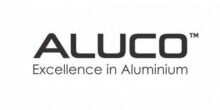The aluminium commercial door is the number one choice for use in just about every type of commercial building. In commercial environments there are regulatory requirements in addition to aesthetic considerations; in particular doors may be required to open and close in a particular manner. In this article we’re going to explain why it is so important to select the correct door closer for aluminium doors.
Commercial aluminium doors are designed for high use buildings such as schools, shops, office blocks and hospitals. Only an aluminium door can perform and last in such demanding conditions.

Commercial doors are required to meet certain design specifications in order to carry out these demanding functions. Aside from reliability there are certain functions that the door must carry out. For example the door mechanism must be able to control the door opening and closing speeds, and control when or how the door opens. One of the critical components in this function is the door closer.
In the vast majority of commercial doors, this door closer will be a transom closer. This is a door closer hidden in the frame head of the door and connected to the top rail with a suitable top arm and fixings.
So which is the correct door closer for aluminium doors.
If you are ordering commercial doors from a trade manufacturer or specifying commercial doors for a construction project there are two main pieces of legislation that need to be considered. The first is the Equality Act. The second is ensuring that if the intended door is a fire door or fire exit door that the relevant Fire Regulations are met.
The door closer plays an important part in ensuring the door that will be installed will meet these regulations. It is useful therefore to give an overview of the Equality Act, Fire Regulations and some initial background.
Equality Act 2010
The Equality Act 2010 now combines over 100 pieces of legislation. This new Act is there to ensure that equal opportunity exists in many walks of life from sexual discrimination, disability discrimination, race relations, equal pay and so forth.
In the case of commercial doors it is disability discrimination that needs to be avoided. Therefore, the Act clearly states that “service providers” and anyone responsible for overall building design and use must provide ease of access and general ease of use around a building. In short any “physical barriers” must be removed that may prevent a disabled person from using or accessing a service provided by the building and its occupier. You can download the amended Part M “access to and use of buildings” regs here.
Fire Regulations
With regard to fire safety on commercial doors, those installed in a designated fire exit will be the “final exit” on an escape route out of a building. Fire exit doors must open instantly, very easily and wherever possible in the direction of the escape. In most cases this will be open out.
Therefore sliding, revolving or bifolding doors are completely unsuitable as fire escape doors. More importantly, fire exit doors must be operated without a key and without any prior knowledge of how the door operates in a fire situation.
At the same time Fire Exit doors whilst intended to provide unhindered exit out of a building are also required to be secure!
What is the difference between a Fire Exit Door and a Fire Door?

The construction industry may loosely use the term “Fire Door” when in fact they mean a Fire Exit Door. In simple terms a Fire Door is a door that is designed to close off a section of a building the event of a fire and provide a level of protection for a specific length of time, usually 30 minutes. Typically these doors will be internal.
The Fire Exit door is as explained above providing exit out of a building in an emergency.
How Door Closers are affected by Legislation
The correct door closer in a commercial door to meet the Equality Act must meet specific opening and closing forces. These are detailed in our Building Regulations, typically BS 8300:2009 and Approved Document M for England and Wales. In Northern Ireland it is Part R and Section 3 for Scotland.
These Regulations state that a door closer must:
Produce an opening force of below 30N between 0º and 30º degrees and below 22.5N between 30º and 60º degrees
On a typical door a high quality door closer such as those supplied by Door Controls, this will be a strength 3 and meets all the current standards.
Not all door closers are able to meet current standards and legislation
High quality door closers such as whilst costing more than a cheaper alternative carry third party accreditation that they meet the required standards. Importantly they also have the ability be adjusted to low opening forces.
What you may not know is that weather seals, hinges, architectural ironmongery, glass weight and door size all play a part in the opening force of the door. Therefore, whilst you may think your closer will meet the required opening force, only on site testing can prove its compliance to BS8300 and Approved Document M.
It is the complete door set that must be compliant with the opening force not just the closer.
The door closer market for commercial doors is very competitive with many door closers being poor copy imitations of higher quality ones. Whilst many are manufactured in China, the quality of the closers varies a lot.
It is important to look out for closers that will not leak if the adjustment screws are loosened too much. Furthermore the quality of the metals used in the top arms and the associated fixings must be of a good quality to ensure the long term performance of the product.
If you are a manufacturer of commercial doors, obtaining a cheap door closer may prove false economy if you are having to replace them for faults and carrying out service calls.
BS EN 1154 is the standard relating to Controlled Door Closing Devices.
This important standard relates to Fire Exit Doors. It states the minimum performance requirements for door closers that are fitted to final exit doors such as aluminium commercial doors used in fire exits. Again high quality closers tested to over a million cycles such as the RTS 87 to size EN3 will comply. Does your current door closer?
The meeting of current standards and legislation is complex for installers and specifiers of commercial aluminium doors and not all door closers will comply. If you would like further information and assistance on the correct products to use, please contact us.






